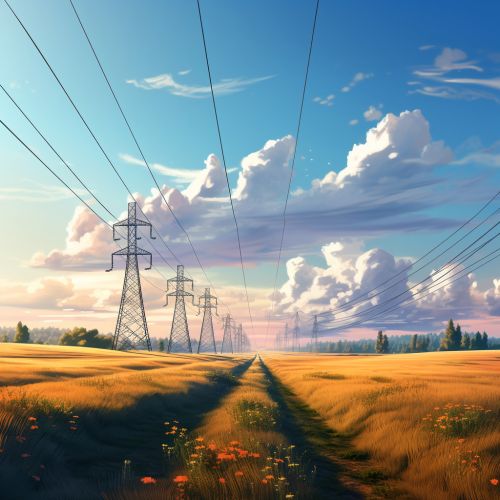Transmission System
Introduction
A transmission system is a critical component of power systems, designed to transmit electrical energy from power plants to distribution substations. This system is composed of a network of high voltage transmission lines, including overhead lines, underground cables, and submarine cables, and associated equipment such as transformers and circuit breakers.


Transmission Lines
Transmission lines are the primary elements of a transmission system. These lines carry electrical energy over long distances at high voltages, typically 115 kV and above. The design of transmission lines involves several factors, including the type of conductor, the configuration of the line, the voltage level, and the distance to be covered.
Overhead Transmission Lines
Overhead transmission lines are the most common type of transmission lines. They are constructed with towers or poles made of steel, concrete, or wood, which support conductors suspended by insulators. The conductors are typically made of aluminum alloy or copper. Overhead lines are widely used due to their lower cost and easier maintenance compared to underground and submarine cables.
Underground Transmission Lines
Underground transmission lines are used when overhead lines are not feasible due to environmental, aesthetic, or land use considerations. These lines are installed in trenches or tunnels, and are insulated to withstand the surrounding soil conditions. The construction and maintenance of underground lines are more complex and costly than overhead lines.
Submarine Transmission Lines
Submarine transmission lines are used to transmit electricity across bodies of water. These lines are similar to underground lines, but are designed to withstand the harsh conditions of the marine environment. Submarine cables are typically used for interconnecting islands or offshore installations with the mainland grid.
Transformers
Transformers are essential components of a transmission system. They are used to step up the voltage for transmission and step down the voltage for distribution. Transformers are designed based on the power rating, voltage level, frequency, and other electrical parameters.
Circuit Breakers
Circuit breakers are used in a transmission system to protect the system from faults. They are designed to interrupt the flow of current in the event of a fault, such as a short circuit or overload. Circuit breakers are classified based on their interrupting medium, such as air, oil, vacuum, or sulfur hexafluoride (SF6).
Control and Protection
The control and protection of a transmission system are achieved through a system known as the substation automation system. This system includes various devices and systems for monitoring, controlling, and protecting the transmission system. It also includes communication systems for transmitting data and control signals between the control center and the substations.
Conclusion
The transmission system plays a vital role in the delivery of electrical energy from power plants to consumers. It is a complex system that requires careful design, operation, and maintenance to ensure reliable and efficient power supply.
